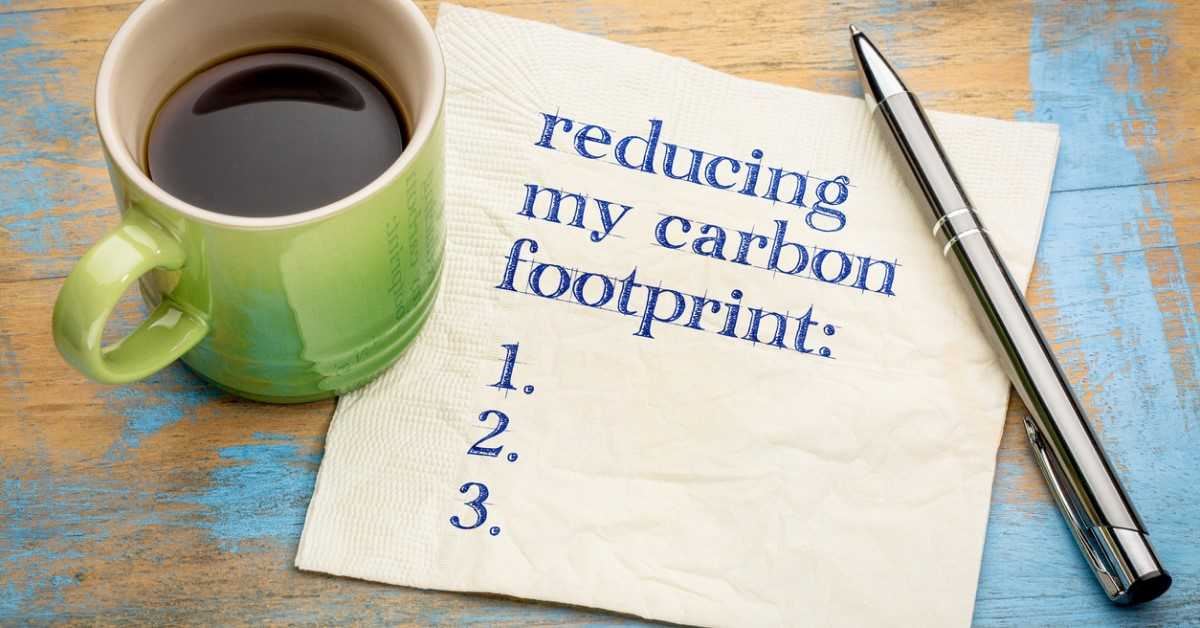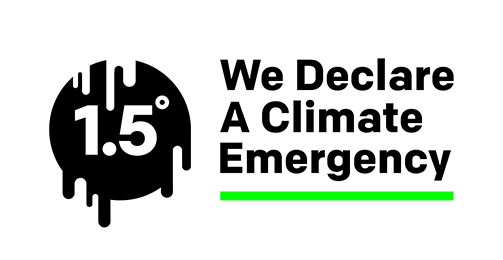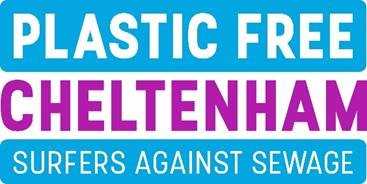Send a message 0333 344 5890 |
- Home
- Knowledge
- Learning Hub
- How Can I Start Reducing My Carbon Footprint as a Business?
How Can I Start Reducing My Carbon Footprint as a Business?
image by Marek Kuliasz |
Did you know that 57% of consumers in the UK are willing to spend more on sustainable products? There’s no doubt that our country is moving towards a greener future. COP26 has highlighted the government’s willingness to start building more eco-friendly infrastructure, and demands for products that are kinder to the planet are on the rise! But, becoming a sustainable business isn’t always easy. With processes you might have stuck to for years, it can be tricky to know where to make changes to go greener. But, it’s not impossible, you just need to know where to start. There’s a clear path to becoming a sustainable business, and it all starts with lowering your carbon footprint. Let’s take a look at what that means and how you can begin. |
Start By Measuring Your Business’s Carbon Footprint
To reduce your carbon footprint, you first need to look at what it currently is. Check which areas of your business are releasing emissions and how much CO2e is being released in each sector. If you’re not sure how to do that, our team can help by calculating your footprint for you.
But do you need to know your footprint to start reducing it? Technically, no, but it does help.
By knowing your current carbon footprint and where your emissions are coming from, you’re in a much better position to start making emission reduction plans. You can make clearer, targeted goals that are going to work.
Knowing where you’ve started also helps you to track your progress. If you know that at the beginning of the year, you were producing 50 tonnes / CO2e, and now you’re creating 37 tonnes / CO2e, you can visibly see how your efforts are paying off. It’s always nice to see the fruits of your labour!
You can also use your measurable progress as evidence of your environmental efforts. There are tons of businesses out there claiming that they’re working towards being more sustainable, but they don’t have anything to show that they really are. If you’ve had your footprint measured twice and you can see it’s gone down - and you know why - then you have the evidence you need to show the world.
How Can I Start Reducing My Businesses Carbon Footprint?
Now you know what your footprint is, it’s time to start looking at ways to reduce it. There are many different options, and you can choose which you begin focusing on based on where your highest output of emissions are.
To give you a head start, we’ve put together some of the main areas you can look at reducing your carbon footprint as a business. Have a read and start thinking about your plans!
1. Start With Energy Cuts
The first port of call for many businesses - and people - looking to reduce their emissions is to cut down on the amount of energy they use. This is a fantastic place to start as there are lots of easy ways to lower your usage quickly.
One option is to make the switch to renewable, clean energy. It has been suggested that making this switch, when combined with electrifying heating and transport, can deliver 75% of the reductions businesses need to reach climate goals, which is a huge chunk of your targets! If you’re still not convinced it’s a good move, a member of the Go Climate Positive managed to save 6.5 tonnes of CO2e every year by making the switch, and they’re living in a 500 sqm residence, not a large warehouse, factory, or offices. Imagine how much you could save?
It’s also wise to switch to LED lighting if you haven’t already. LEDs are much more efficient than other lighting options and are a quick and simple change to make. You should see financial payback in less than a year, too, along with considerable energy savings. For example, if you replace a traditional 90W lighting fitting with a 14W LED, you’d save around 225kWhs every year if you used it for 8 hours a day. That’s equal to 71 kgs of CO2e for every fitting with the average fuel mix in the UK. For 100 light fittings, you’d instantly cut down on 7 tonnes of CO2e every year.
Never underestimate the power of simply switching off your lights and appliances, either. If just opting for LEDs could save you 7 tonnes, imagine how much you’d decrease your footprint if you turned them off more often?
You should also keep your boilers and fridges in top-notch condition. Have them serviced regularly to ensure they’re efficient, and set their temperatures accurately to ensure you’re not wasting energy. By lowering the heat on your boiler by just 1-2 degrees Celsius, you can cut your carbon and save around 10% on your yearly heating bill.
We always advise businesses to get an energy survey if they can. In many parts of the country these are available free for small and medium-sized businesses (for example Target 2030 in Gloucestershire). They can help you pinpoint the areas where you’re wasting energy and advise you on how you can decarbonise your energy use.
2. Reduce Travel Emissions
If you travel in your business, it’s going to rack up your carbon footprint quickly. Transport makes up one-fifth of all carbon emissions around the globe, so it’s an important place to focus your efforts.
If you’re about to drive for business purposes, think about alternative methods. Cars are huge polluters, and if you can switch to walking, cycling, or even taking public transport to your destination, you’ll be helping the planet.
If there’s a chance you can stay put rather than move, do so! It doesn’t sound like the advice of a personal trainer, but it’s definitely the advice of someone who believes in sustainability. We’ve all been getting used to doing more of our meetings online over lockdown, so try and keep that habit going.
If you have three meetings every day and drive 20 miles in an average diesel car, you’re going to generate about 4.7 tonnes of CO2e per year. By cutting down to just one meeting outside and doing two on video calls, you can save over 3 tonnes of CO2e every year! You’ll also save a lot of time driving and have more time to stay productive or just chill out - whatever you choose.
Sometimes, there’s no avoiding hopping in your car to get somewhere. But, you can still make a difference by switching to electric vehicles. By 2030, the government plans on stopping any new sales of petrol and diesel cars, and they’re investing heavily in electrical charging points. They’re also introducing new incentives to go electric, like the plug-in grant, making it a much easier choice.
3. Be Conscious of Your Suppliers
Your carbon footprint isn’t just about your actions, but those of your suppliers too. Every time you buy something for your business, first think, do I really need this? If you do, ask yourself if there’s a way you can buy it that lowers your carbon footprint. Choosing sustainable businesses that can show you how they are reducing their carbon footprint is a great choice, as is buying second hand.
A great example in business is computers. It takes around 800kgs of CO2e to make one desktop PC (according to Mike Berners-Lee in How Bad Are Bananas), and the average computer is replaced roughly every four years. Usually, this isn’t because the whole thing has broken, but because one tiny part has. So, why not upgrade your PC instead of buying a whole new unit? By replacing a battery or switching a chip or two in 10 PCs this year instead of buying new ones, you could prevent a whopping 7 tonnes of CO2e from entering our atmosphere!
It’s also smart to shop local wherever you can. Some items aren’t too bad for the planet, but because they’ve been shipped worldwide, they’ve racked up a huge carbon footprint.
4. How Eco-Friendly Are Your Products?
It's easy to get caught up in the emissions from your operations, but what about the actual product you're creating? It's all well and good looking for eco-friendly suppliers and switching off your lights, but if the products you make are harmful to the planet, you'll never be as eco-friendly as you could be.
Try to create more sustainable products that are less toxic, use less energy and water to produce, and can be disposed of in an environmentally-friendly way. Avoid plastic wherever you can, including in the product itself but also your packaging. Ideally, your product packaging should be 100% recyclable.
Once you've created a more sustainable product, you can use standards and certifications to show off your eco-efforts. For example, many paper companies are certified by the FSC, showing that their products have been made from trees in sustainably managed forests. You can also add the carbon footprint of your product to your packaging, as Quorn has started to do, or use an energy label to show how much energy your product consumes. The energy label will rate your product from A to G, letting customers quickly see how efficient your product is.
Once that's done, take a look at how your products are shipped. As we mentioned earlier, transportation is a prominent source of CO2e, and shipping your products using unsustainable methods will quickly increase your footprint. Here are some quick switches you can make in your shipping chain:
● Boats instead of aeroplanes
● Trains (freight trains) instead of cars and vans
● Electric instead of petrol and diesel
● Bicycles instead of cars and vans
5. Encourage Your Employees
Your employees add to your businesses carbon footprint, so get them involved in your eco-efforts! By working together, you can reduce your emissions and create a better business for the planet.
Make sure your staff are aware of any sustainable schemes in place that they can help with, such as turning off lights and appliances when not in use. You can also participate in eco-friendly employment schemes, like the Bike to Work Scheme, which gives employees up to 42% off new bikes. If they live too far away to bike to work, your staff may be more interested in the EV Salary Sacrifice scheme, which allows them to pay for an electric vehicle every month from their gross salary (before tax and other contributions have been deducted), helping them to save money on their electric car.
If you can offer remote working, do so. But remember if they are working from home, a proportion of their home energy use will count toward your business carbon footprint so encourage them to make the home more energy-efficient and to switch to renewable energy.
6. Watch Where You're Investing
Banks and investing aren't often spoken about when it comes to carbon footprint, but they should be. Some banks are incredibly unethical and unsustainable, using your money to fund projects that are adding more fossil fuels into our atmosphere.
Find out if your bank has made a commitment not to invest in fossil fuels. At the time of writing we know of only three banks in the UK that have done this; Triodos Bank, Cooperative Bank, and Starling Bank.
There are more ethical options when it comes to business saving accounts. Charity Bank and Nationwide, for example, have accounts that seem to be sustainable and won't jeopardise your carbon footprint.
Perhaps, surprisingly, workplace pensions are easier to manage. Some of the most obvious choices are the most environmentally friendly, including Nest and People Pensions. Both companies have made commitments to invest in other businesses that are committed to reducing carbon, and Nest is in the process of becoming net zero across all of their funds. You could even choose both and leave the final decision up to your staff, giving them the freedom to control their money.
Maintain Momentum by Working in an Annual Cycle
Reducing your carbon footprint isn't a one-time thing, and you'll need to keep the momentum high to ensure long-term results. That's why we suggest working in an annual cycle that breaks the work down into smaller, more manageable tasks whilst maintaining your motivation.
Calculate Your Carbon Footprint
Start your yearly cycle by calculating your carbon footprint. Make sure this includes all emissions from your entire supply chain (your scope 1, 2, & 3 areas).
Reduce Your Emissions
Once you know your footprint and which areas create the highest amount of CO2e, start setting ambitious targets. Use all of those ways to reduce emissions we've mentioned here to bring your footprint down.
Offset Your Emissions
If there are any emissions you have not yet been able to reduce, consider offsetting them with carbon credits. This doesn’t remove the need to keep working to reduce them but it helps compensate for them in the meantime. Ensure that any carbon credits you buy are verified by an independent organisation, like the Verified Carbon Standard or Gold Standard.
Communicate Honestly
It's so important that you let others know of the work you're doing openly and transparently. This helps consumers to make more informed decisions about what they buy and could give you an edge over competitors.
Do - and Don't Stop Doing!
Implement your carbon reduction strategy throughout the year and make sure you stay on track by setting and monitoring goals. When the year is over, those strategies should have become standard practice. Now it's time to start again - we're in it for the long haul!
You're Not Alone In This
At Go Climate Positive, we know that every business has the power to become more sustainable - they may just need a helping hand along the way. That's what we're here for. Our team can guide you through this process, helping you understand more about your impact on the planet, create actionable plans to lower your carbon footprint and give you certifications as evidence of your good work. If you'd like to learn more, book an appointment with our Chief Carbon Coach and let's start reducing your footprint together.
Written by Eoin McQuone

Eoin (pronounced like "Ian") is the Chief Carbon Coach and founder of Go Climate Positive. He is a Practitioner member of IEMA (the Institute of Environmental Management) and a sustainability lead on the Cheltenham Economic Recovery Task Force.
Eoin says, "Sustainability is no longer a 'nice to do', it is business critical. My goal is to make it accessible and affordable for every business, however big or small , no matter their market sector."





